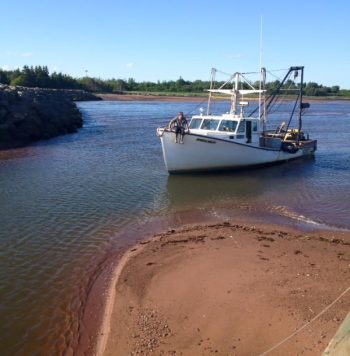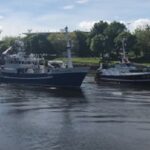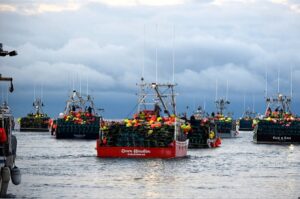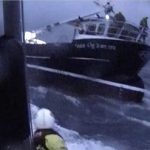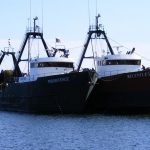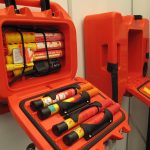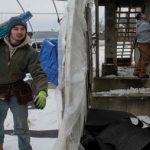Tag Archives: Department of Fisheries and Oceans

Nunavut fishery gets a big boost in turbot quotas, expects a $7M to $8M increase in revenue
Last week, the federal Department of Fisheries and Oceans increased the total allowable catch for 2017 and 2018 by 575 tonnes in each of the two fishing areas adjacent to Baffin Island. “What it means, of course, if you’re looking at revenue on that amount of product, is somewhere between $7 million to $8 million of increase in revenue,” said Jerry Ward, the director of fisheries at Qikiqtaaluk Corporation. “Plus, it will also provide more jobs throughout the year and so on. So we’re quite pleased with it.” The limits on turbot in zone 0A, northeast of Baffin Island, was upped to 8,575 tonnes, with Nunavut fishermen receiving all of the increase. The limit in zone 0B, off Baffin Island’s southeast coast, was increased to 7,575 tonnes. Nunavut will receive 90 per cent of that increase, with Inuit fishers in Nunavik receiving the other 10 per cent. Read the story here 10:17
Canadian researchers denied samples of oil spill dispersant Corexit 9500, Corexit 9580 by Nalco Environmental Solutions
 Canada’s Department of Fisheries and Oceans says it will try again to secure samples of an oil spill dispersant for testing by government-funded researchers after the American manufacturer refused two requests in 2016. The impasse surrounds research by fish biologist Craig Purchase of Memorial University of Newfoundland in St. John’s. Purchase was working on a $75,000 project funded by DFO comparing two types of oil dispersant products called Corexit on beach-spawning capelin. But he never got the chance to compare Corexit 9500 — an open ocean oil spill dispersant — with Corexit 9580, a surface agent used to clean beaches. He was able to get a sample of the oil spill dispersant from DFO but the manufacturer, Nalco Environmental Solutions, refused to provide Purchase with a sample of the beach cleaning agent Corexit 9580 last April. Nalco refused again when DFO asked for a sample on his behalf. Read the story here 09:24 Read this Corexit’s Deadly Legacy
Canada’s Department of Fisheries and Oceans says it will try again to secure samples of an oil spill dispersant for testing by government-funded researchers after the American manufacturer refused two requests in 2016. The impasse surrounds research by fish biologist Craig Purchase of Memorial University of Newfoundland in St. John’s. Purchase was working on a $75,000 project funded by DFO comparing two types of oil dispersant products called Corexit on beach-spawning capelin. But he never got the chance to compare Corexit 9500 — an open ocean oil spill dispersant — with Corexit 9580, a surface agent used to clean beaches. He was able to get a sample of the oil spill dispersant from DFO but the manufacturer, Nalco Environmental Solutions, refused to provide Purchase with a sample of the beach cleaning agent Corexit 9580 last April. Nalco refused again when DFO asked for a sample on his behalf. Read the story here 09:24 Read this Corexit’s Deadly Legacy
DFO bust targets 12 year old boy for catching and selling a few smelt
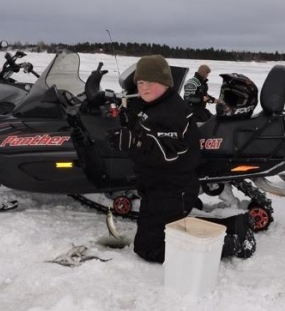 A Gander Bay South man says his 12-year-old son was unfairly targeted by a Department of Fisheries and Oceans sting over $20 in smelt. Donnie Harris told CBC News his son, Jayden, has been catching and selling smelt for the last few years — for just $2 a dozen — and this year posted an ad on a classified website using his father’s account. Jayden said he hoped to attract a few more customers with the ad on the website. “I wanted to get some money to buy an ice shelter,” Last Wednesday, Jayden’s ad prompted an email from a “Bob Smith,” requesting 10 dozen — four fresh, six frozen — and said he’d be by around the next afternoon. The next afternoon, with Jayden back in school, Smith stopped by to pick up the fish. Harris said they chatted for a little while about Jayden’s love of fishing. “So he knew, even before he done what he done, that it wasn’t me, it was my son that he was setting up,” said Harris. Eventually, Smith paid $20 for the fish, and about five minutes later he returned — this time with a DFO truck and three officers, Read the story here 13:48
A Gander Bay South man says his 12-year-old son was unfairly targeted by a Department of Fisheries and Oceans sting over $20 in smelt. Donnie Harris told CBC News his son, Jayden, has been catching and selling smelt for the last few years — for just $2 a dozen — and this year posted an ad on a classified website using his father’s account. Jayden said he hoped to attract a few more customers with the ad on the website. “I wanted to get some money to buy an ice shelter,” Last Wednesday, Jayden’s ad prompted an email from a “Bob Smith,” requesting 10 dozen — four fresh, six frozen — and said he’d be by around the next afternoon. The next afternoon, with Jayden back in school, Smith stopped by to pick up the fish. Harris said they chatted for a little while about Jayden’s love of fishing. “So he knew, even before he done what he done, that it wasn’t me, it was my son that he was setting up,” said Harris. Eventually, Smith paid $20 for the fish, and about five minutes later he returned — this time with a DFO truck and three officers, Read the story here 13:48
A ‘Confluence of events’ may have caused mysterious fish kill off Nova Scotia
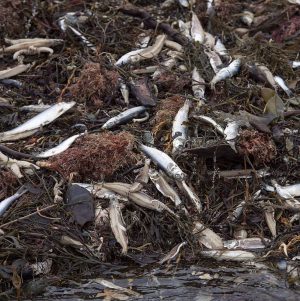 A federal scientist says the recent high-profile fish kill off southwestern Nova Scotia may have been caused by a “confluence of events,” including fish behaviour, weather, and various ecological factors such as predators. However, Alain Vezina says it’s still not known what caused thousands of herring and shellfish to wash ashore at several points between late November and through December. Vezina, who is regional director of science for the Department of Fisheries and Oceans (DFO), says causes such as pollution, pesticides, and naturally occurring toxins have been ruled out. He says overall the kill was a “small and localized event” that occurred over a 100 kilometre swath from St. Marys Bay to Tusket. Read more here 14:47
A federal scientist says the recent high-profile fish kill off southwestern Nova Scotia may have been caused by a “confluence of events,” including fish behaviour, weather, and various ecological factors such as predators. However, Alain Vezina says it’s still not known what caused thousands of herring and shellfish to wash ashore at several points between late November and through December. Vezina, who is regional director of science for the Department of Fisheries and Oceans (DFO), says causes such as pollution, pesticides, and naturally occurring toxins have been ruled out. He says overall the kill was a “small and localized event” that occurred over a 100 kilometre swath from St. Marys Bay to Tusket. Read more here 14:47
Warming trend continues in waters off Atlantic Canada
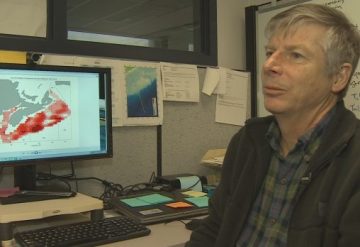 Warmer ocean temperatures off Atlantic Canada continued in 2016, maintaining a trend that started earlier this decade, according to survey results from Canada’s Department of Fisheries and Oceans. On the Scotian Shelf off Nova Scotia, temperatures last year were as high as three degrees above the 30-year average used to establish climatic norms. “It’s not quite the same [record] level of 2012, but it’s getting close to it,” said Dave Hebert, a research scientist with DFO. He added that 2016 was probably the second warmest year on record. Scientists have struggled to explain what is causing the most intriguing aspect of the recent trend: the warming of ocean bottom water, which is not influenced by surface weather events. Hebert said the latest theory is based on model results that see the Gulf Stream moving northward and intersecting with the tail of the Grand Banks. “That is stopping the cold Labrador Sea water from coming around the tail of the Grand Banks,” he said. “That’s where we normally get the cold water that refreshes the [Scotian] Shelf. That hasn’t been happening. Read the story here 16:48
Warmer ocean temperatures off Atlantic Canada continued in 2016, maintaining a trend that started earlier this decade, according to survey results from Canada’s Department of Fisheries and Oceans. On the Scotian Shelf off Nova Scotia, temperatures last year were as high as three degrees above the 30-year average used to establish climatic norms. “It’s not quite the same [record] level of 2012, but it’s getting close to it,” said Dave Hebert, a research scientist with DFO. He added that 2016 was probably the second warmest year on record. Scientists have struggled to explain what is causing the most intriguing aspect of the recent trend: the warming of ocean bottom water, which is not influenced by surface weather events. Hebert said the latest theory is based on model results that see the Gulf Stream moving northward and intersecting with the tail of the Grand Banks. “That is stopping the cold Labrador Sea water from coming around the tail of the Grand Banks,” he said. “That’s where we normally get the cold water that refreshes the [Scotian] Shelf. That hasn’t been happening. Read the story here 16:48
‘I was driving in lobster,’ Beaches strewn with ‘millions’ of lobsters after storm surge along New Brunswick’s northeast coast
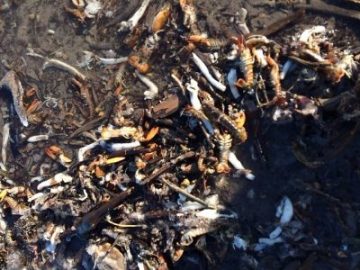 Jean Benoit says he never expected to see what he described as ‘millions’ of lobsters washed up on the beach in Val Comeau, N.B., on Saturday morning. “I was driving in lobster,” he said of his trip to the beach about 10 kilometres from Tracadie-Sheila on the Acadian Peninsula. Benoit and his friends routinely check the beach after storms but weren’t prepared for what they found New Year’s Eve, after Environment Canada warned of a storm surge the day before. “It was incredible all the lobster that we can get there,” Benoit said. “It was amazing. We cannot imagine what the wind can bring us, but it was too much.” He described seeing lobster, crabs and big clams washed up in stretches of 150 metres, then nothing for a stretch of 300 metres, then more shellfish again. Read the story here 09:37
Jean Benoit says he never expected to see what he described as ‘millions’ of lobsters washed up on the beach in Val Comeau, N.B., on Saturday morning. “I was driving in lobster,” he said of his trip to the beach about 10 kilometres from Tracadie-Sheila on the Acadian Peninsula. Benoit and his friends routinely check the beach after storms but weren’t prepared for what they found New Year’s Eve, after Environment Canada warned of a storm surge the day before. “It was incredible all the lobster that we can get there,” Benoit said. “It was amazing. We cannot imagine what the wind can bring us, but it was too much.” He described seeing lobster, crabs and big clams washed up in stretches of 150 metres, then nothing for a stretch of 300 metres, then more shellfish again. Read the story here 09:37
Most southwest Nova Scotia beaches now clear of dead herring, latest round of tests find no viruses
 Fisheries officials say the flood of dead herring washing up on southwest Nova Scotia beaches has slowed. Fisheries and Oceans Canada says it is monitoring for “evidence of new incidents” in areas where thousands of dead herring have been found since November, and more recently scores of starfish, clams and lobster. Read the story here Meanwhile, The latest round of tests from fish kills in southwest Nova Scotia have not found any viruses. “The viral tests, the long-term ones we were waiting for, all of them came back negative,” said David Jennings, a spokesman for the Department of Fisheries and Oceans in Halifax. Jennings said recent patrols confirm most beaches from Tusket in Yarmouth County around to inner St. Marys Bay are clear of dead herring. The majority of those that remain on shore are located from the mouth of the Sissiboo River to the Plympton area, he said. “We have a few new wash-ups of herring being identified, but not to the extent reported [on] earlier.” Read the story here 17:28
Fisheries officials say the flood of dead herring washing up on southwest Nova Scotia beaches has slowed. Fisheries and Oceans Canada says it is monitoring for “evidence of new incidents” in areas where thousands of dead herring have been found since November, and more recently scores of starfish, clams and lobster. Read the story here Meanwhile, The latest round of tests from fish kills in southwest Nova Scotia have not found any viruses. “The viral tests, the long-term ones we were waiting for, all of them came back negative,” said David Jennings, a spokesman for the Department of Fisheries and Oceans in Halifax. Jennings said recent patrols confirm most beaches from Tusket in Yarmouth County around to inner St. Marys Bay are clear of dead herring. The majority of those that remain on shore are located from the mouth of the Sissiboo River to the Plympton area, he said. “We have a few new wash-ups of herring being identified, but not to the extent reported [on] earlier.” Read the story here 17:28
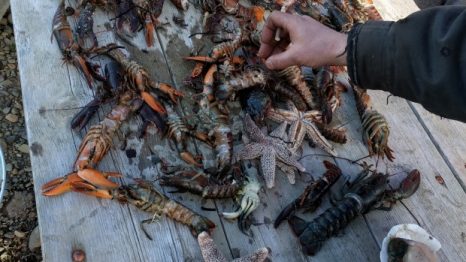
Scientists test water to narrow down what’s killing herring, sea creatures at St. Marys Bay
Federal scientists are testing water samples and scanning images of the bottom of St. Marys Bay, hoping to determine what caused thousands of herring and sea creatures to wash ashore near Digby, N.S. Staff aboard a vessel gathered samples Thursday and used an underwater camera to film and photograph the ocean floor. Kent Smedbol, manager of population ecology for the Department of Fisheries and Oceans (DFO) in the Maritimes, said the data will be examined to try to figure out whether an environmental factor caused the fish to die. “It could be an intrusion of very cold water very rapidly, it could be related to a rapid change in salinity with the storms that have gone through … due to the sudden influx of fresh water, rain or runoff from the land,” he said. “Depending on what we find, then hopefully that will allow us to discount a number of possibilities and focus our efforts on some possible explanations.” Read the story here 08:55
Controlling Agreements – Who owns the fishing licence?
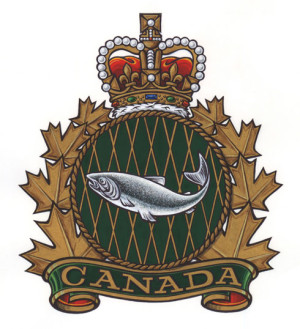 According to an official from the Department of Fisheries and Oceans (DFO), controlling agreements in the inshore fishing fleet on Canada’s East Coast are almost a thing of the past. In 2007, DFO asked fishers throughout the region to declare whether or not they had such agreements. Those who declared themselves to be party to such deals were given a deadline, 2014, to get out of the agreements. Morley Knight, Department of Fisheries and Oceans says about 700 fishers declared controlling agreements and almost all of them have complied with the department’s policy. He added that since 1979, the department’s policy regarding controlling agreements has been clear. A policy to preserve the owner/operator rule — simply that the holder of a commercial fish licence is the person who has control of the management and operation of the fishing enterprise — was enacted in 1979, during the tenure of former fisheries minister Romeo LeBlanc. Still, many fishers entered into agreements with third parties — fish processing companies and other business enterprises — that saw control of the fishing enterprise go to those companies. Read the story here 10:29
According to an official from the Department of Fisheries and Oceans (DFO), controlling agreements in the inshore fishing fleet on Canada’s East Coast are almost a thing of the past. In 2007, DFO asked fishers throughout the region to declare whether or not they had such agreements. Those who declared themselves to be party to such deals were given a deadline, 2014, to get out of the agreements. Morley Knight, Department of Fisheries and Oceans says about 700 fishers declared controlling agreements and almost all of them have complied with the department’s policy. He added that since 1979, the department’s policy regarding controlling agreements has been clear. A policy to preserve the owner/operator rule — simply that the holder of a commercial fish licence is the person who has control of the management and operation of the fishing enterprise — was enacted in 1979, during the tenure of former fisheries minister Romeo LeBlanc. Still, many fishers entered into agreements with third parties — fish processing companies and other business enterprises — that saw control of the fishing enterprise go to those companies. Read the story here 10:29
DFO cracking down on deals that flout rules to keep inshore fishery in local hands
 Two Maritime fishermen have lost their fishing licences following a Department of Fisheries and Oceans investigation into the use of so-called controlling agreements in the past year. They haven’t released the names or location of the fishermen. “We’ve concluded five cases. Of those cases, two were in agreements that were contrary to our policy,” said Morley Knight, DFO’s Maritimes regional manager. The department said other licence reviews are ongoing as it ramps up efforts to combat controlling agreements — the side deals where a fisherman hands control and use of a licence to a third party, usually a company. The agreements are seen as an end-run around policies to keep the inshore fishery in local hands, like the owner-operator policy that fishing licenses are held only by owner-operators, and fleet separation, which prevents companies from being both harvester and processor. Read the rest here 09:13
Two Maritime fishermen have lost their fishing licences following a Department of Fisheries and Oceans investigation into the use of so-called controlling agreements in the past year. They haven’t released the names or location of the fishermen. “We’ve concluded five cases. Of those cases, two were in agreements that were contrary to our policy,” said Morley Knight, DFO’s Maritimes regional manager. The department said other licence reviews are ongoing as it ramps up efforts to combat controlling agreements — the side deals where a fisherman hands control and use of a licence to a third party, usually a company. The agreements are seen as an end-run around policies to keep the inshore fishery in local hands, like the owner-operator policy that fishing licenses are held only by owner-operators, and fleet separation, which prevents companies from being both harvester and processor. Read the rest here 09:13
DFO cracks down on secret fishing licence deals
 Canada’s Department of Fisheries and Oceans says it’s cracking down on so-called “controlling agreements” that result in fishermen holding a fishing licence in name only. Morley Knight, the department’s manager for the Maritimes, said five licence-compliance reviews have been completed in the region and other cases are ongoing. Controlling agreements allow individuals or corporations other than the licence holder to secretly control the use of the licence. They allow companies to get around DFO’s owner-operator policy, which is meant to ensure the independence of Atlantic Canada’s inshore fishery. Read the rest here 08:11
Canada’s Department of Fisheries and Oceans says it’s cracking down on so-called “controlling agreements” that result in fishermen holding a fishing licence in name only. Morley Knight, the department’s manager for the Maritimes, said five licence-compliance reviews have been completed in the region and other cases are ongoing. Controlling agreements allow individuals or corporations other than the licence holder to secretly control the use of the licence. They allow companies to get around DFO’s owner-operator policy, which is meant to ensure the independence of Atlantic Canada’s inshore fishery. Read the rest here 08:11
Lobster season on Nova Scotia’s southwest coast delayed by bad weather
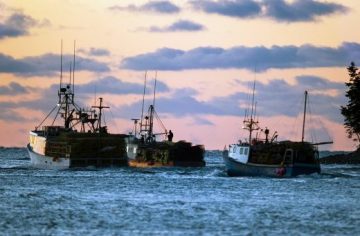 The lobster season on Nova Scotia’s southwest coast has been delayed by one day due to high winds a rough seas. The season was supposed to start Monday but has been put off until Tuesday morning at 6 a.m., said Graeme Gawn president of local 9 with the Maritime Fishermen’s Union. “It’s always frustrating because everybody is ready to go and they want to go, but nobody wants to get hurt and nobody wants to see their crews get hurt.” Gawn said the Department of Fisheries and Oceans made the decision Sunday morning on a conference call. The first day of the lobster season, referred to as dumping day, is when fishermen first set their lobster traps, it’s considered one of the most dangerous days of the entire season. Most fishermen are more than happy to wait until the weather is more cooperative to head out on the water, said Gawn. Read the rest here 12:24
The lobster season on Nova Scotia’s southwest coast has been delayed by one day due to high winds a rough seas. The season was supposed to start Monday but has been put off until Tuesday morning at 6 a.m., said Graeme Gawn president of local 9 with the Maritime Fishermen’s Union. “It’s always frustrating because everybody is ready to go and they want to go, but nobody wants to get hurt and nobody wants to see their crews get hurt.” Gawn said the Department of Fisheries and Oceans made the decision Sunday morning on a conference call. The first day of the lobster season, referred to as dumping day, is when fishermen first set their lobster traps, it’s considered one of the most dangerous days of the entire season. Most fishermen are more than happy to wait until the weather is more cooperative to head out on the water, said Gawn. Read the rest here 12:24
Input sought for Northwest Atlantic mackerel research
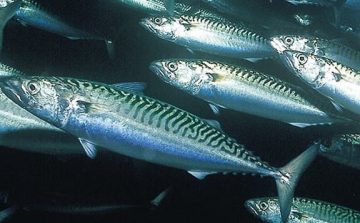 Researcher working on management advice for mackerel stocks seeking participation from fishermen in survey An informal survey of Canadian Atlantic mackerel commercial, recreational and bait fishers will soon be completed. Elisabeth Van Beveren, a post-doctoral researcher from Belgium working in Canada on northwest Atlantic mackerel, says she hopes to have most answers by mid-November. If results are still being received, she may extend the deadline. She is working with scientists at the Maurice-Lamontagne Institute (Department of Fisheries and Oceans) in order to better estimate the size of the Canadian mackerel stock. Van Beveren says she has heard from about 360 people to date. Read the story here 10:02
Researcher working on management advice for mackerel stocks seeking participation from fishermen in survey An informal survey of Canadian Atlantic mackerel commercial, recreational and bait fishers will soon be completed. Elisabeth Van Beveren, a post-doctoral researcher from Belgium working in Canada on northwest Atlantic mackerel, says she hopes to have most answers by mid-November. If results are still being received, she may extend the deadline. She is working with scientists at the Maurice-Lamontagne Institute (Department of Fisheries and Oceans) in order to better estimate the size of the Canadian mackerel stock. Van Beveren says she has heard from about 360 people to date. Read the story here 10:02
Species At Risk? Eel decline in Quebec and Ontario could end industry in Maritimes
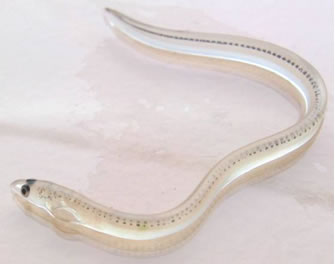 An effort to protect eels in Ontario and Quebec is threatening to shut down the little known but lucrative eel fishery in Nova Scotia and New Brunswick. “What is at stake is the livelihood of people in rural Nova Scotia,” said Yvonne Carey of Atlantic Elver Fishery, one of eight Nova Scotia eel fishery licence holders. Another licence is in New Brunswick. Between 130 and 140 people are employed each year netting adult and baby American eels as they enter and leave rivers in the two provinces. This week in Dartmouth, officials from the Department of Fisheries and Oceans will review data collected on those rivers as part of a to decide whether the Maritime eel population is really at risk. The department is considering a recommendation from wildlife experts to declare American eels a species at risk. Read the story here 14:41
An effort to protect eels in Ontario and Quebec is threatening to shut down the little known but lucrative eel fishery in Nova Scotia and New Brunswick. “What is at stake is the livelihood of people in rural Nova Scotia,” said Yvonne Carey of Atlantic Elver Fishery, one of eight Nova Scotia eel fishery licence holders. Another licence is in New Brunswick. Between 130 and 140 people are employed each year netting adult and baby American eels as they enter and leave rivers in the two provinces. This week in Dartmouth, officials from the Department of Fisheries and Oceans will review data collected on those rivers as part of a to decide whether the Maritime eel population is really at risk. The department is considering a recommendation from wildlife experts to declare American eels a species at risk. Read the story here 14:41
Nova Scotia fishermen are concerned about proposed Marine Protected Areas (they should be!)
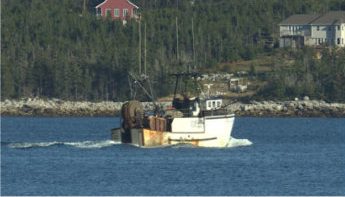 The federal Department of Fisheries and Oceans wants to double the number of marine protected areas around Nova Scotia next year. DFO is holding a series of consultation meetings with the public to get feedback to the idea. It identified 52 special areas within the 475,000-square-kilometre region along Nova Scotia’s Atlantic coast and in the Bay of Fundy that are in the running for the designation including the Sambro Ledges, Port Joli and Eastern Shore islands. Marty King, an oceans biologist with DFO, said the government will choose at least two areas to protect by next spring. But the proposed protections have fishermen worried. “They feel like they’re under siege sometimes,” said Peter Connors, president of the Eastern Shore Fishermen Protective Association. “I’m quite concerned.” “There’s fear of exclusion from the fish,” said Connors. “I think there’s a certain amount of evidence that that will take place.” Read the rest here 09:21
The federal Department of Fisheries and Oceans wants to double the number of marine protected areas around Nova Scotia next year. DFO is holding a series of consultation meetings with the public to get feedback to the idea. It identified 52 special areas within the 475,000-square-kilometre region along Nova Scotia’s Atlantic coast and in the Bay of Fundy that are in the running for the designation including the Sambro Ledges, Port Joli and Eastern Shore islands. Marty King, an oceans biologist with DFO, said the government will choose at least two areas to protect by next spring. But the proposed protections have fishermen worried. “They feel like they’re under siege sometimes,” said Peter Connors, president of the Eastern Shore Fishermen Protective Association. “I’m quite concerned.” “There’s fear of exclusion from the fish,” said Connors. “I think there’s a certain amount of evidence that that will take place.” Read the rest here 09:21
Hybridization – Escaped farmed salmon are breeding with wild salmon and producing offspring
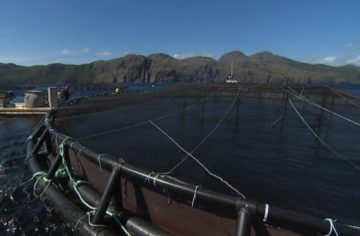 Research has confirmed that escaped farmed salmon are breeding with wild salmon and producing offspring in many rivers in Newfoundland. “We did find evidence of successful breeding between farmed and wild salmon. Approximately a third of the individuals we sampled showed evidence of hybrid ancestry,” said Department of Fisheries and Oceans scientist Ian Bradbury, of the unpublished study presented at an international aquaculture conference in St. John’s on Tuesday. Researchers studied thousands of fish in 18 rivers on the island’s south coast, and found evidence of interbreeding in 17 of them. “It was widespread across a suite of the rivers that we looked at. I think there was only one river where we didn’t see evidence of hybridization,” said Bradbury. It’s estimated that over the decades since the advent of aquaculture, more than 750,000 salmon have escaped from fish farms in the province. The new study sheds light on what happens to them in the wild. Read the story here 11:26
Research has confirmed that escaped farmed salmon are breeding with wild salmon and producing offspring in many rivers in Newfoundland. “We did find evidence of successful breeding between farmed and wild salmon. Approximately a third of the individuals we sampled showed evidence of hybrid ancestry,” said Department of Fisheries and Oceans scientist Ian Bradbury, of the unpublished study presented at an international aquaculture conference in St. John’s on Tuesday. Researchers studied thousands of fish in 18 rivers on the island’s south coast, and found evidence of interbreeding in 17 of them. “It was widespread across a suite of the rivers that we looked at. I think there was only one river where we didn’t see evidence of hybridization,” said Bradbury. It’s estimated that over the decades since the advent of aquaculture, more than 750,000 salmon have escaped from fish farms in the province. The new study sheds light on what happens to them in the wild. Read the story here 11:26
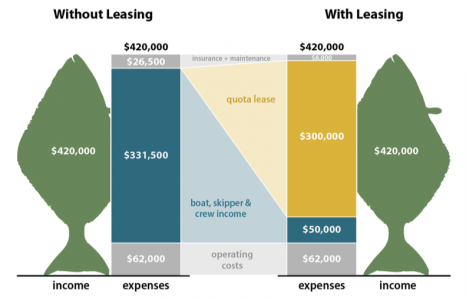
Owning the Owner Operator Policy
I read a blog post this week and the first paragraph rang so true to me: how most media stories would lead you to believe that the fishery is on its last legs and a dying industry when the opposite is in fact the case. What really caught my interest though was that there is a movement in the United States that if new fishing licences are issued, that they be to owner operators. At a time when Canada’s commitment to owner operator fisheries seems to be seriously in question, it’s interesting to see other countries advocating and moving in that direction. Owner operator fisheries means simply that the person who owns the boat and license is the one on the water fishing. While the official policy jargon in Canada will tell you that the Department of Fisheries and Oceans supports owner operator fisheries, the reality of policy decisions over the past two decades that I’ve been in the fishery have resulted in quite the opposite: management has moved towards individual transferable quotas (ITQ’s) which ultimately result in consolidation of access to the resource for a few (mainly) corporate interests who then hire people to fish. Read the story here. 10:16
Starving cod – Harvesters reporting catching thin cod with little in their digestive systems
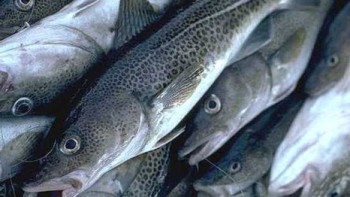 Scientists with the Department of Fisheries and Oceans are keeping a close eye on cod stocks in southern Labrador, in the wake of reports from harvesters catching fish in rough shape this season. “What we’re catching here now, it’s very poor. There’s nothing in the puttocks [digestive tract] of the fish,” fisherman Warrick Chubbs told CBC’s The Broadcast. “Only little jellyfish, the size of your thumbnail, and not many of them. The very odd one, you’ll see maybe one or two rotten shrimp.” Chubbs isn’t alone in his concerns. “It certainly seems like this year in southern Labrador the cod are not in very good condition at all,” said DFO research scientist John Brattey, who is hearing multiple similar reports from the region. Read the story here 08:26
Scientists with the Department of Fisheries and Oceans are keeping a close eye on cod stocks in southern Labrador, in the wake of reports from harvesters catching fish in rough shape this season. “What we’re catching here now, it’s very poor. There’s nothing in the puttocks [digestive tract] of the fish,” fisherman Warrick Chubbs told CBC’s The Broadcast. “Only little jellyfish, the size of your thumbnail, and not many of them. The very odd one, you’ll see maybe one or two rotten shrimp.” Chubbs isn’t alone in his concerns. “It certainly seems like this year in southern Labrador the cod are not in very good condition at all,” said DFO research scientist John Brattey, who is hearing multiple similar reports from the region. Read the story here 08:26
Department of Fisheries and Oceans Rejects COSEWIC’s Species-at-risk designation of Atlantic bluefin tuna
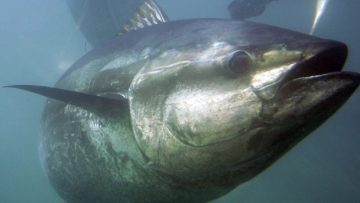 Canada’s Department of Fisheries and Oceans has rejected advice to list the Atlantic bluefin tuna as an endangered species. The long-awaited recommendation should preserve the region’s $10-million bluefin tuna fishery, industry representatives say. The department says western Atlantic bluefin tuna stocks have been rebuilding since 2011, when the Committee on the Status of Endangered Wildlife in Canada said tuna should be listed as an endangered species under federal species-at-risk legislation. That would have made it illegal to kill, harm or capture the giant fish. Glenn MacKenzie of the Gulf Nova Scotia Tuna Association said he was “very relieved.” He’s one of 135 commercial tuna fishermen who fish from the Nova Scotia side of the Gulf of Saint Lawrence. Read the story here 19:27
Canada’s Department of Fisheries and Oceans has rejected advice to list the Atlantic bluefin tuna as an endangered species. The long-awaited recommendation should preserve the region’s $10-million bluefin tuna fishery, industry representatives say. The department says western Atlantic bluefin tuna stocks have been rebuilding since 2011, when the Committee on the Status of Endangered Wildlife in Canada said tuna should be listed as an endangered species under federal species-at-risk legislation. That would have made it illegal to kill, harm or capture the giant fish. Glenn MacKenzie of the Gulf Nova Scotia Tuna Association said he was “very relieved.” He’s one of 135 commercial tuna fishermen who fish from the Nova Scotia side of the Gulf of Saint Lawrence. Read the story here 19:27
It’s time for P.E.I. Fishermen’s Association to grow up
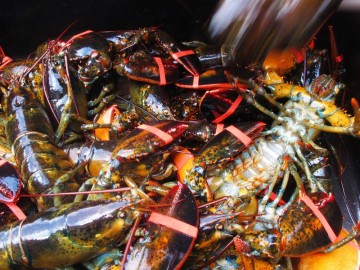 ‘Will fishermen assume their traditional role of bitching and complaining, and doing little else?’ General speaking, lobster fishermen fishing the spring season on the Island had a “pretty good year.” While catches were down from last year in some harbours on the north side and on the south-east coast, prices ranging from $6.50 to $8 a pound made up for it. There wouldn’t be many boats that grossed less than $100,000 and there’d be a good many that grossed well over $200,000.,, Recently the Department of Fisheries and Oceans (DFO) decided to gradually increase the minimum legal size for lobsters caught in District 25. Scientific and anecdotal evidence suggests that following an increase in the carapace size, catch sizes also increase. There seems to be general acceptance of this change. However, no one was surprised when PEIFA opposed the measure. Read the story here 12:00
‘Will fishermen assume their traditional role of bitching and complaining, and doing little else?’ General speaking, lobster fishermen fishing the spring season on the Island had a “pretty good year.” While catches were down from last year in some harbours on the north side and on the south-east coast, prices ranging from $6.50 to $8 a pound made up for it. There wouldn’t be many boats that grossed less than $100,000 and there’d be a good many that grossed well over $200,000.,, Recently the Department of Fisheries and Oceans (DFO) decided to gradually increase the minimum legal size for lobsters caught in District 25. Scientific and anecdotal evidence suggests that following an increase in the carapace size, catch sizes also increase. There seems to be general acceptance of this change. However, no one was surprised when PEIFA opposed the measure. Read the story here 12:00
Nathan Cullen wants changes to the fisheries system in the North West of Canada
 The fisheries system in the North West of Canada needs an overhaul. That was the message from the Skeena-Bulkley Valley MP, Nathan Cullen, last week when he spoke with media. An incident between a few fishermen and Department of Fisheries and Oceans (DFO) officers on Aug. 2 has increased tensions in the area, and Canfisco Oceanview plant saw an increased presence of officers. Frustration is mounting over the changing regulations and restrictive fishing methods, and allowing certain user groups to fish down the coast, a DFO spokesperson stated two weeks ago.,, His answer is to sit down with DFO and the fisheries minister and reform the fishery. Some of the changes he’d like to see already exist on the East Coast. One example he gave was the owner-operator policy in the Atlantic, where commercial fishing licences are held by an individual or the licence holders’s company. Read the story here 20:26
The fisheries system in the North West of Canada needs an overhaul. That was the message from the Skeena-Bulkley Valley MP, Nathan Cullen, last week when he spoke with media. An incident between a few fishermen and Department of Fisheries and Oceans (DFO) officers on Aug. 2 has increased tensions in the area, and Canfisco Oceanview plant saw an increased presence of officers. Frustration is mounting over the changing regulations and restrictive fishing methods, and allowing certain user groups to fish down the coast, a DFO spokesperson stated two weeks ago.,, His answer is to sit down with DFO and the fisheries minister and reform the fishery. Some of the changes he’d like to see already exist on the East Coast. One example he gave was the owner-operator policy in the Atlantic, where commercial fishing licences are held by an individual or the licence holders’s company. Read the story here 20:26
A total shutdown of all salmon fisheries on the Fraser River to conserve sockeye
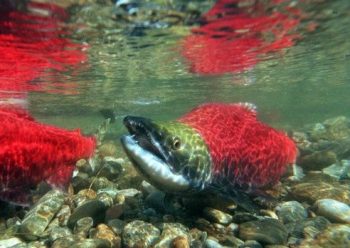 The Fraser River was shut down Thursday at sundown to all salmon fishing due to conservation concerns about sockeye. The notice of “immediate closure” of all salmon fisheries went out from DFO for the tidal and non-tidal sections of the Fraser. “Current run size estimates of Fraser River Summer Run sockeye salmon have resulted in no allowable harvest and a conservation concern,” according to the abrupt notice from Fisheries and Oceans Canada. The Summer run of Fraser sockeye is usually the strongest. Not this year. “The Department’s first priority is to ensure that there is sufficient sockeye returning to the spawning grounds. The Department will manage all fisheries to minimize sockeye impacts and provide priority access to First Nations’ fishing for food, social and ceremonial purposes.” Recreational anglers had been targeting chinook selectively but the risk was considered is too great for accidentally intercepting sockeye. DFO even mentioned it in their notice. Read the rest here 14:23
The Fraser River was shut down Thursday at sundown to all salmon fishing due to conservation concerns about sockeye. The notice of “immediate closure” of all salmon fisheries went out from DFO for the tidal and non-tidal sections of the Fraser. “Current run size estimates of Fraser River Summer Run sockeye salmon have resulted in no allowable harvest and a conservation concern,” according to the abrupt notice from Fisheries and Oceans Canada. The Summer run of Fraser sockeye is usually the strongest. Not this year. “The Department’s first priority is to ensure that there is sufficient sockeye returning to the spawning grounds. The Department will manage all fisheries to minimize sockeye impacts and provide priority access to First Nations’ fishing for food, social and ceremonial purposes.” Recreational anglers had been targeting chinook selectively but the risk was considered is too great for accidentally intercepting sockeye. DFO even mentioned it in their notice. Read the rest here 14:23
What’s Fishy About the Feds’ Salmon Promises?
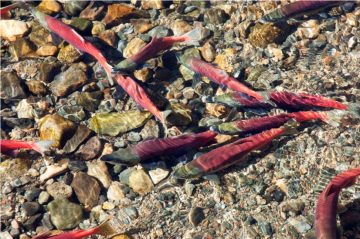 As federal Fisheries and Oceans Minister Dominic LeBlanc was in West Vancouver Tuesday, promising that his government would act on all 75 recommendations from the 2012 Cohen Commission into the decline of Fraser River sockeye salmon, independent biologist Alexandra Morton was sailing into friendly waters on northern Vancouver Island and casting doubt on the government’s intentions. “There is no substance to it,” said Morton, pointing out that LeBlanc has avoided any commitment to act on the Cohen recommendation to separate promotion of aquaculture from its duty to protect wild salmon or to put the brakes on the salmon farming industry. The progress report, delivered by LeBlanc, noted that Fisheries and Oceans oversight of salmon farming meshes with the department’s mandate and LeBlanc said at the news conference that DFO has a responsibility to promote the sustainable use of “fish resources in a way that is good for the local economy.” That does not go down well with Morton, a thorn in the side of the salmon farming industry and the Department of Fisheries and Oceans for decades. Read the story here 20:22
As federal Fisheries and Oceans Minister Dominic LeBlanc was in West Vancouver Tuesday, promising that his government would act on all 75 recommendations from the 2012 Cohen Commission into the decline of Fraser River sockeye salmon, independent biologist Alexandra Morton was sailing into friendly waters on northern Vancouver Island and casting doubt on the government’s intentions. “There is no substance to it,” said Morton, pointing out that LeBlanc has avoided any commitment to act on the Cohen recommendation to separate promotion of aquaculture from its duty to protect wild salmon or to put the brakes on the salmon farming industry. The progress report, delivered by LeBlanc, noted that Fisheries and Oceans oversight of salmon farming meshes with the department’s mandate and LeBlanc said at the news conference that DFO has a responsibility to promote the sustainable use of “fish resources in a way that is good for the local economy.” That does not go down well with Morton, a thorn in the side of the salmon farming industry and the Department of Fisheries and Oceans for decades. Read the story here 20:22
Fish, Food and Allied Workers Union News Release: Improvements to Northern Cod Fishery are a Step in the Right Direction
 St. Johns – The one-year management approach for the 2016 2J3KL Stewardship Cod fishery signals a new chapter in rebuilding the cod fishery in Newfoundland and Labrador. The improvements in the approach for the 2016 fishery, announced by the Department of Fisheries and Oceans (DFO) last week, includes a lengthened season with opportunities to harvest more cod. According to data from DFO, the Northern cod spawning stock biomass has increased from 20,000 tonnes in 1997 to 300,000 tonnes today. “Rebuilding the cod fishery will bring with it many challenges and opportunities,” said Keith Sullivan, President of the Fish, Food and Allied Workers Union. “This new approach will provide harvesters with an increased opportunity to harvest and will give the processing sector opportunities to market more sustainable, high quality cod.” Read the press release here 11:34
St. Johns – The one-year management approach for the 2016 2J3KL Stewardship Cod fishery signals a new chapter in rebuilding the cod fishery in Newfoundland and Labrador. The improvements in the approach for the 2016 fishery, announced by the Department of Fisheries and Oceans (DFO) last week, includes a lengthened season with opportunities to harvest more cod. According to data from DFO, the Northern cod spawning stock biomass has increased from 20,000 tonnes in 1997 to 300,000 tonnes today. “Rebuilding the cod fishery will bring with it many challenges and opportunities,” said Keith Sullivan, President of the Fish, Food and Allied Workers Union. “This new approach will provide harvesters with an increased opportunity to harvest and will give the processing sector opportunities to market more sustainable, high quality cod.” Read the press release here 11:34
A shrimp apocalypse? Anything is possible, says DFO scientist
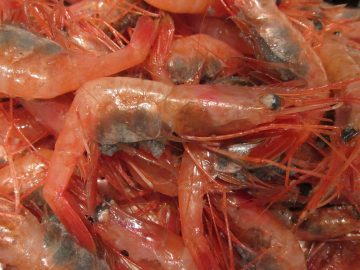 A scientist with the Department of Fisheries and Oceans is defending its bleak assessment of shrimp stocks off Newfoundland’s northeast coast and Labrador, and is blaming the resurgent codfish – which feed on shrimp – as a “driving factor.” Katherine Skanes is also firing back at those questioning the status of the stock. “When the biomass was going up, they had confidence in our survey. Then when the biomass goes down, they lose confidence,” she said. Jaws dropped this past spring after DFO’s annual northern shrimp assessment revealed that the “fishable” biomass in Area 6 had declined by a staggering 41 per cent between 2014 and 2015. DFO blames environmental conditions and predation for the decline. Read the story here 10:46
A scientist with the Department of Fisheries and Oceans is defending its bleak assessment of shrimp stocks off Newfoundland’s northeast coast and Labrador, and is blaming the resurgent codfish – which feed on shrimp – as a “driving factor.” Katherine Skanes is also firing back at those questioning the status of the stock. “When the biomass was going up, they had confidence in our survey. Then when the biomass goes down, they lose confidence,” she said. Jaws dropped this past spring after DFO’s annual northern shrimp assessment revealed that the “fishable” biomass in Area 6 had declined by a staggering 41 per cent between 2014 and 2015. DFO blames environmental conditions and predation for the decline. Read the story here 10:46
More Skeena River fish escaping North Coast fishermen in 2016
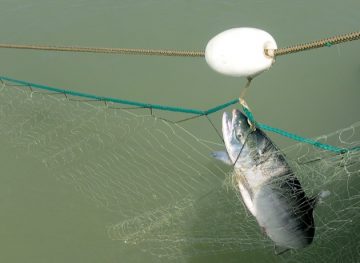 The fishing season has had a grim opening. While the season opened earlier than in recent years, fisherman are having a poor harvest in the Skeena River. The Skeena Tyee test fishery, a gillnetter that collects data for the Department of Fisheries and Oceans to determine the amount of sockeye salmon that escape the fishery, reported higher than average levels of escapement on July 8-9. The Northern Representative for the United Fishermen and Allied Workers’ Union (UFAWU), Joy Thorkelson, said only 7,000 fish were caught and there were 230 boats out fishing. Area 4, in the Skeena, is tracking well but people have different theories about why so many fish bypassed those fishermen. “We don’t know if it was deep or the fishermen weren’t fishing in the right areas. We don’t know what happened. There was lots of escapement and they should have caught way more than they did,” she said. Read the rest here 13:39
The fishing season has had a grim opening. While the season opened earlier than in recent years, fisherman are having a poor harvest in the Skeena River. The Skeena Tyee test fishery, a gillnetter that collects data for the Department of Fisheries and Oceans to determine the amount of sockeye salmon that escape the fishery, reported higher than average levels of escapement on July 8-9. The Northern Representative for the United Fishermen and Allied Workers’ Union (UFAWU), Joy Thorkelson, said only 7,000 fish were caught and there were 230 boats out fishing. Area 4, in the Skeena, is tracking well but people have different theories about why so many fish bypassed those fishermen. “We don’t know if it was deep or the fishermen weren’t fishing in the right areas. We don’t know what happened. There was lots of escapement and they should have caught way more than they did,” she said. Read the rest here 13:39
Grand Bank scallop fishermen once again block access to Clearwater Seafoods plant
 The harvesters want answers from the Fish, Food and Allied Workers (FFAW-Unifor) union and the Department of Fisheries and Oceans (DFO) about access to scallop beds on St. Pierre Bank. The fishermen initially blocked the plant on Monday and thought they might be making some headway when they were invited to take part in a conference call with Bonavista-Burin-Trinity MP Judy Foote, DFO officials and the union on Thursday. Things didn’t pan out as the harvesters had hoped, however, Wayne Meade said. FFAW-Unifor representatives spoke with government first. The union then held a second conference call with the fishermen without anyone from government on the line, Meade said. Which pissed them off! Read the rest here 18:41
The harvesters want answers from the Fish, Food and Allied Workers (FFAW-Unifor) union and the Department of Fisheries and Oceans (DFO) about access to scallop beds on St. Pierre Bank. The fishermen initially blocked the plant on Monday and thought they might be making some headway when they were invited to take part in a conference call with Bonavista-Burin-Trinity MP Judy Foote, DFO officials and the union on Thursday. Things didn’t pan out as the harvesters had hoped, however, Wayne Meade said. FFAW-Unifor representatives spoke with government first. The union then held a second conference call with the fishermen without anyone from government on the line, Meade said. Which pissed them off! Read the rest here 18:41
‘We’ve won the battle, but not the war’: Inshore gets 70% of reduced shrimp quota
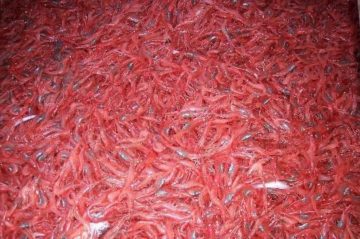 The federal fisheries department is allocating less shrimp off Newfoundland’s northeast coast and southern Labrador, in a decision that is poised to cause trouble for on an industry that is a lifeblood for many fishing communities. According to a document from the Department of Fisheries and Oceans, the total allowable catch for the 2016-2017 season in Area 6 will be 27,825 tons, a 42 per cent reduction from last year’s quota. Area 6 is a fishing zone that covers waters off the coasts of southern Labrador and northern Newfoundland. The last-in, first-out (LIFO) policy is also being abolished and replaced with a proportional sharing arrangement. Inshore vessel operators will be given about 70 per cent of the quota, while offshore trawlers will receive around 23 per cent. Read the rest here Northern shrimp fishery sees quotas cut, offshore to get 23% of catch Click here 08:36
The federal fisheries department is allocating less shrimp off Newfoundland’s northeast coast and southern Labrador, in a decision that is poised to cause trouble for on an industry that is a lifeblood for many fishing communities. According to a document from the Department of Fisheries and Oceans, the total allowable catch for the 2016-2017 season in Area 6 will be 27,825 tons, a 42 per cent reduction from last year’s quota. Area 6 is a fishing zone that covers waters off the coasts of southern Labrador and northern Newfoundland. The last-in, first-out (LIFO) policy is also being abolished and replaced with a proportional sharing arrangement. Inshore vessel operators will be given about 70 per cent of the quota, while offshore trawlers will receive around 23 per cent. Read the rest here Northern shrimp fishery sees quotas cut, offshore to get 23% of catch Click here 08:36
Opinion: A lesson unlearned in fisheries
Canadian Fisheries Minister Dominic LeBlanc has followed his father’s example by allowing inshore fishermen to continue catching northern shrimp off Newfoundland and Labrador. Under pressure to ban the inshore fleet to protect dwindling stocks, the minister decided instead to trim quotas for all harvesting sectors in the shrimp fishery. Dominic’s father, the late Romeo LeBlanc, served as Canada’s minister of fisheries when Canada proclaimed the 200-mile economic zone in 1977. The elder LeBlanc was determined to manage the industry on behalf of inshore fishermen and small coastal communities adjacent to the resource. To that end, he required fishermen to operate their own vessels, forbade processors from owning vessels and fought the introduction of factory freezer trawlers. In short, father Romeo battled the “corporatization” of the fishery. Son Dominic won’t re-introduce those measures, but his decision on northern shrimp does seem Romeo-esque. On Thursday, he announced the Department of Fisheries and Oceans is abolishing the “last-in, first-out” (LIFO) policy in the northern shrimp fishery. Read the rest here 19:44
has followed his father’s example by allowing inshore fishermen to continue catching northern shrimp off Newfoundland and Labrador. Under pressure to ban the inshore fleet to protect dwindling stocks, the minister decided instead to trim quotas for all harvesting sectors in the shrimp fishery. Dominic’s father, the late Romeo LeBlanc, served as Canada’s minister of fisheries when Canada proclaimed the 200-mile economic zone in 1977. The elder LeBlanc was determined to manage the industry on behalf of inshore fishermen and small coastal communities adjacent to the resource. To that end, he required fishermen to operate their own vessels, forbade processors from owning vessels and fought the introduction of factory freezer trawlers. In short, father Romeo battled the “corporatization” of the fishery. Son Dominic won’t re-introduce those measures, but his decision on northern shrimp does seem Romeo-esque. On Thursday, he announced the Department of Fisheries and Oceans is abolishing the “last-in, first-out” (LIFO) policy in the northern shrimp fishery. Read the rest here 19:44






